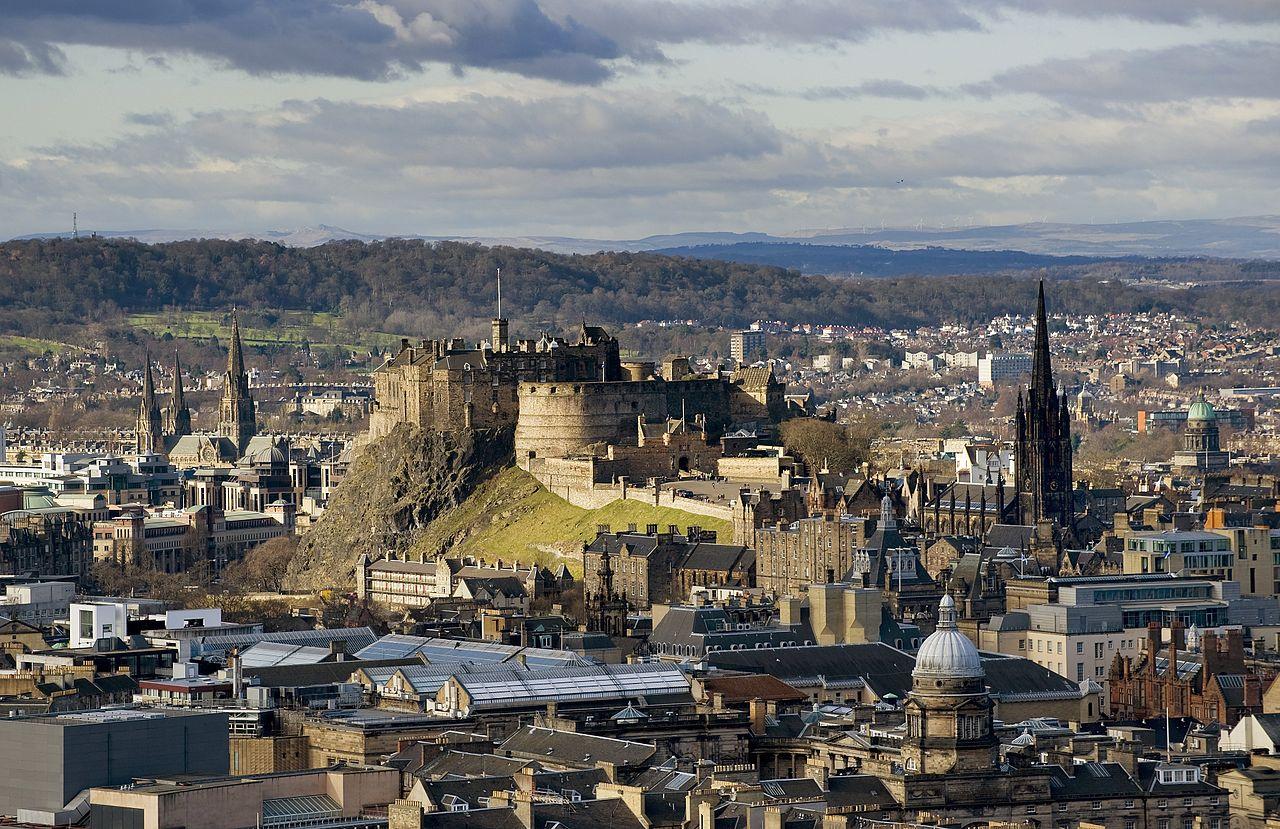Ian Rankin's Edinburgh: A literary tour with the Inspector Rebus author
Thirty years after Inspector Rebus made his debut in print, author Ian Rankin gives us a tour of his literary Edinburgh
It was “dreich” – grey and miserable – as they say in Scotland. Author Ian Rankin took a sip from his beer, looked out of the pub window as the rain pelted down and asked: “Ever taken a taxi tour of Edinburgh?”
The bestselling crime writer had offered to give me a walking tour of Inspector Rebus’s Edinburgh to mark the 30th anniversary of his iconic Scottish cop (the first novel, Knots & Crosses, was published in 1987). The official celebration is the three-day RebusFest event, which starts on 30 June.
But the best-laid plans can go awry. I arrive in Edinburgh to find it’s bucketing down. So we hit upon a hastily improvised plan B: a cab tour.
Any tour of Rebus’s Edinburgh has to start in the Oxford Bar on Young Street. It’s where the fictional detective spends an inordinate amount of time – so it’s there we meet for a late liquid lunch. Why, out of all the city’s boozers, did he make the humble Oxford Bar the watering hole of choice for Inspector John Rebus?
“I’d just started writing the first Rebus book as a postgraduate student and was sharing a flat with a student who was a part-time barman in the Ox,” he says.
“I went along one night, and instantly thought, ‘This is where Rebus would drink’. It’s small, hidden away and it seemed to illustrate that hidden, Jekyll and Hyde side of contemporary Edinburgh that I was trying to write about – the Edinburgh that tourists don’t see. There were no bells and whistles, no jukebox – it was very basic – and a lot of coppers drank there at the time.”

Today, the pub – where incidentally Rankin had his stag night in 1986, at the table in the back of the room – looks just as it did 30 years ago. Indeed, judging by old sepia photographs, it looks much as it did a century ago.
After a wee drink, we decide to brave the rain and Rankin hails a cab. First stop on our whistle stop tour of Rebus’s Edinburgh is the landmark Caledonian Hotel at the end of Princes Street. Dating back to 1903, it’s from the era of the iconic great railway hotels – but we’re not here for the architecture. “In my latest book, Rather Be the Devil, a financier and a rock star live in a little square just behind the hotel,” says Ian, pointing through the taxi window.
We drive east down Princes Street and pass Waverley Station – “So many places in Edinburgh have a literary connection – even the station is named after a book,” says Rankin (Waverley was Sir Walter Scott’s first novel). Then we make for Cowgate, home to the city mortuary. The nondescript grey concrete building is another regular Rebus haunt, though somewhat less inviting than the Oxford Bar.
We head along Cowgate – or “canyon-like” Cowgate, as Rankin describes it. “It also has a number of music venues, one of which Rebus visits in my latest novel,” he says.
A couple of streets on, we see Edinburgh Castle looming high above us. In Rankin’s 2006 book, The Naming of the Dead, a high-profile politician fell to his death from its craggy peaks. “But the question is did he fall or was he pushed?” says Rankin. “But I haven’t used the castle that often – it’s a bit too obvious.”
That said, as Scottish author Robert Louis Stevenson observed, Edinburgh is a precipitous city. “There are a lot of high places a novelist can have people fall from,” agrees Rankin. “I had someone fall to their death from Arthur’s Seat; and in a short story, someone else fell to their doom from the Scott Monument [in Princes Street].”
On George IV Bridge, he points out the Elephant House Cafe where Rebus has met his nemesis, gangster “Big Ger” Cafferty, on occasion. In Market Street, he asks the taxi to stop beside a dark alley.
“This is Fleshmarket Close, which inspired the title of another novel of mine,” he tells me. “It’s about human trafficking – the traffic in flesh – so I thought Fleshmarket Close was the perfect title. This part of town is full of such little lanes and alleys. If you walk down them, it’s like journeying back to 18th- or 19th-century Edinburgh – it’s as if nothing has changed.”
Impressed by Rankin’s encyclopaedic knowledge of Edinburgh’s city centre streets – he’s been directing the cabbie throughout our tour – I joke that he’s certainly got what it takes to be a taxi driver in the city should he ever fancy a change of career.
“The problem would be the driving,” he says, over one last drink at the Oxford. “The roadworks and one-way streets make driving around the city centre a nightmare, and I haven’t got the patience for it. Mind you, I could happily be a walking tour guide.”
And then he’s off. “Cheers man!” he says, downing his pint and heading into the drizzle.
Later, after the rain has eased, I retrace our steps – Edinburgh is made for walking, particularly in the summer when it doesn’t get dark until around 11pm. The hour might be late but thankfully real-life Edinburgh is considerably safer than Rebus’s bloody city.
Travel essentials
Getting there
Airlines flying to Edinburgh include Flybe from regional airports including Belfast City and Manchester. Virgin Trains East Coast runs from London.
Staying there
Hotel Indigo Edinburgh has doubles from £160, room only
More information
RebusFest is from 30 June to 2 July
Join our commenting forum
Join thought-provoking conversations, follow other Independent readers and see their replies
Comments
Bookmark popover
Removed from bookmarks